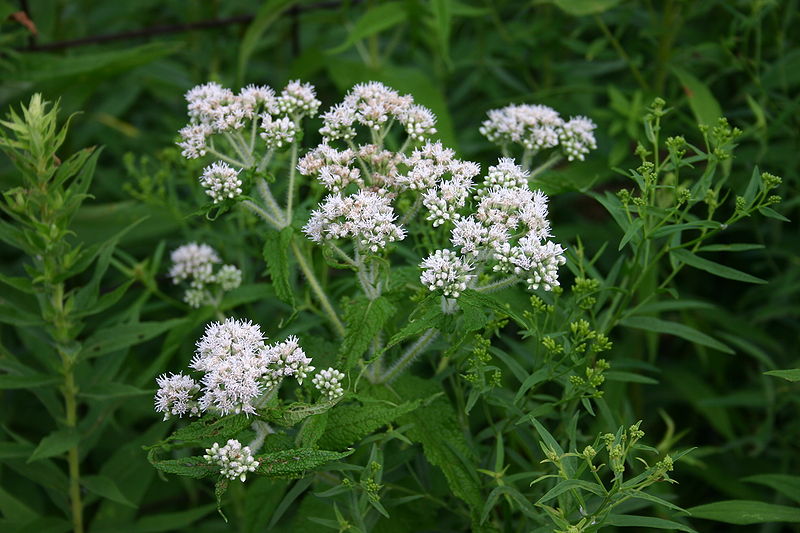Boneset (Eupatorium perfoliatum) is a perennial that is native to North America, specifically to the Eastern United States and Canada. It is related to Joe Pye weed and is a member of the aster family.
It was used by the Native Americans to treat fevers and colds. They introduced the European colonists to the plant. The Europeans used it as a cure-all. There is no scientific evidence that boneset has any effect on colds or fevers.
You will want to add this one to your butterfly garden. It attracts butterflies of all kinds, but is the particular nectar plant for hairstreaks and bronze copper butterflies.
Boneset is hardy in zones 4 – 9. It grows best in wet areas such as stream banks, flood plains, swamps and bogs. The plants will grow in either full sun or partial shade, preferring partial shade.
Boneset is 3 – 4 feet tall and 2 – 3 feet wide. The leaves are lance shaped. The flowers are small and white, growing in clusters on top of stems that are separate from the foliage. Bloom time is late summer into fall.
Be careful introducing this plant into your garden. It can be invasive. The plant will readily self-seed. Be sure to remove the dead flowers before they produce seed. Boneset also spreads via underground rhizomes. The plants grow in clusters created by the rhizomes making it easy to divide when the clusters get too big.
If you want to grow boneset from seed, it is best to direct sow the seed in your garden in the late summer or fall, mimicking the natural way that the seeds are distributed. They will germinate the following spring. You might want to sow more seed than usual because the germination rate is very low. Surface sow the seeds. Do not cover them. They need light to germinate.
You can also start seed indoors three weeks before your last frost. You will need to cold stratify them to mimic the winter weather that they would experience outdoors.
Surface sow them in a container filled with pre-moistened soil. Do not cover the seeds. They need light to germinate. Put the container in a plastic bag and then put it in your refrigerator for 30 days. Check it periodically to make sure the soil stays moist. Use a mister if the soil has started to dry. After 30 days, you can remove the container from the refrigerator and the plastic bag and place it on a sunny windowsill.
Germination should occur in 1 – 2 weeks. You can transplant your seedlings outdoors when night-time temperatures are consistently above 65⁰F.

